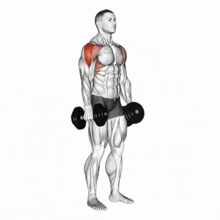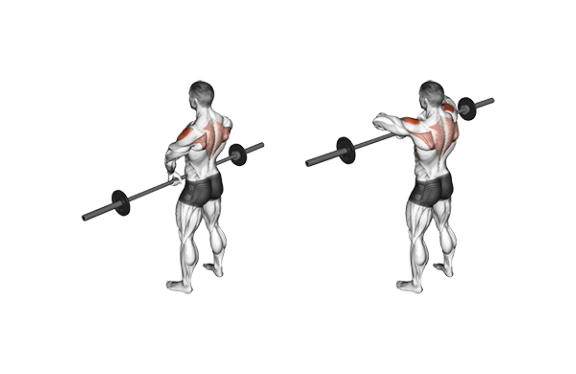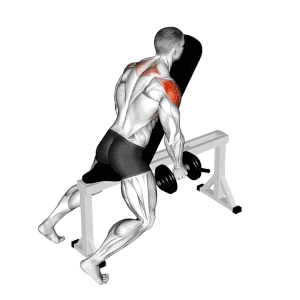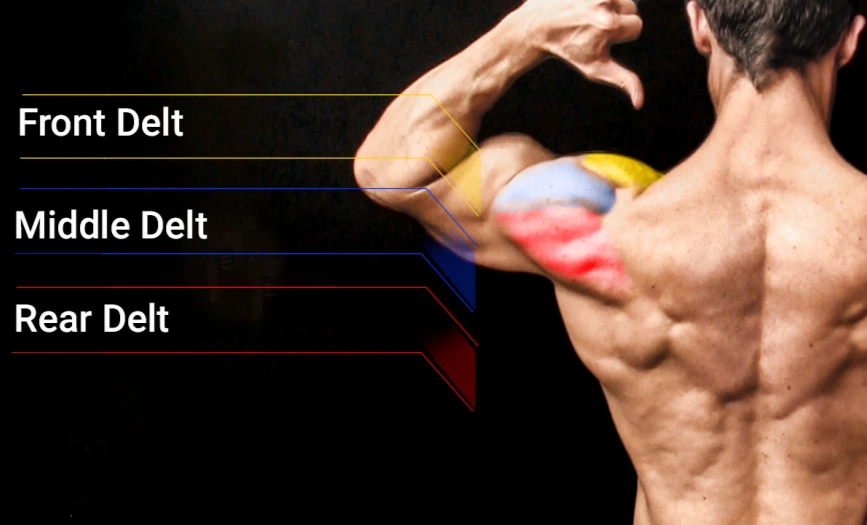You’re here for the best middle delt exercises, right?
Good — because that’s the one thing that can take your shoulders from “meh” to “whoa” fast.
Most people hit the gym, smash a few presses, and think they’ve done enough for shoulders.
But here’s the problem — skip the middle delt, and your frame stays narrow.
No width. No round shape. Just flat.
In this guide, we’ll fix that.
I’ll walk you through the best middle delt exercises that actually work.
What Is the Middle Delt?
You know that muscle that makes your shoulders look wider from the front?
That’s your middle delt — the side part of your shoulder.
It’s like the “shoulder pad” nature gave you.
When it’s built, you look broader, stronger, and your T-shirts fit better.
When it’s weak, your upper body just looks… narrow. Even if you lift.
Why it matters:
- Instant Width – A bigger middle delt makes your frame pop.
- Better Shape – Gives that rounded shoulder cap you see on athletes.
- Support for Lifts – Helps you press more, pull better, and protect your joints.
6 Best Middle Delt Exercises You Can Do
You don’t need every shoulder exercise out there.
A few well-chosen moves, done right, will make your shoulders look wider, rounder, and stronger.
Here are the middle delt exercises worth adding to your routine.
Dumbbell Lateral Raise
The classic move for targeting the side of your shoulders. Works great with light to moderate weight.

Steps to Perform:
- Stand tall, dumbbells at your sides, elbows slightly bent.
- Lift arms out to the side until just below shoulder height.
- Lower slowly, keeping tension in your delts.
Best for:
- Beginners learning shoulder control
- Adding safe volume without stressing joints
Common Mistakes:
- Swinging the weights up with momentum
- Lifting too high and losing middle delt tension
Cable Lateral Raise (One Arm)
Keeps steady tension on the middle delt from start to finish for a smooth, controlled rep.

Steps to Perform:
- Set cable to lowest position with a single handle.
- Stand sideways, hold handle with outside hand.
- Raise arm out to the side, pause at top, lower slowly.
Best for:
- Fixing left-right imbalances
- Improving mind-muscle connection
Common Mistakes:
- Twisting the torso to move the weight
- Raising the handle too far forward instead of straight to the side
Seated Dumbbell Lateral Raise
Removes momentum so your middle delts do all the work.

Steps to Perform:
- Sit upright, dumbbells at your sides.
- Keep core tight, back straight.
- Lift arms out to the side, control the weight down.
Best for:
- Lifters who swing too much when standing
- Strict form training days
Common Mistakes:
- Leaning forward during the lift
- Rushing the lowering phase
Machine Lateral Raise
Locks your body in place so you can focus on moving with your shoulders.

Steps to Perform:
- Adjust seat so pads sit just above elbows.
- Push arms out to the side, squeeze at the top.
- Lower under control.
Best for:
- New lifters learning the pattern
- High-rep shoulder finishers
Common Mistakes:
- Using legs or hips to push
- Letting the weight drop too quickly
Upright Row (Narrow Grip)
A compound lift that works your middle delts along with traps.

Steps to Perform:
- Hold barbell/EZ bar with hands shoulder-width or narrower.
- Pull up along your body, lead with elbows.
- Stop at upper chest, lower slowly.
Best for:
- Adding variety
- Training shoulders and traps together
Common Mistakes:
- Pulling with wrists instead of elbows
- Going too high and stressing shoulder joints
Incline Support Lateral Raise
Full isolation — bench keeps your body still so only the delts move.

Steps to Perform:
- Set bench to 45°, lie chest-down, dumbbells in hand.
- Raise arms out to the side, pause at top.
- Lower slowly, keeping tension.
Best for:
- Advanced lifters chasing max isolation
- End-of-workout burnout sets
Common Mistakes:
- Using too much weight and losing control
- Lifting above shoulder height, shifting load away from delts
Middle Delt Workout Plans You Can Steal
Training your middle delts isn’t about doing every move you know — it’s about picking the right ones, putting them in the right order, and repeating them consistently.
Here are two sample plans you can follow right away — one for beginners, one for intermediate/advanced lifters.
Do them twice a week for the best results.
| Level | Exercise | Sets | Reps | Notes |
|---|---|---|---|---|
| Beginner | Dumbbell Lateral Raise | 3 | 12 | Focus on slow, controlled reps |
| Cable Lateral Raise (One Arm) | 3 | 12 | Keep tension stead | |
| Intermediate / Advanced | Seated Dumbbell Lateral Raise | 4 | 10–12 | Strict form, no momentum |
| Upright Row (Narrow Grip) | 3 | 8–10 | Lead with elbows, not wrists | |
| Incline Support Lateral Raise | 3 | 12–15 | Perfect finisher for full burnout |
Tips for Using These Plans:
- Rest 60–90 seconds between sets for hypertrophy (muscle growth).
- Pick a weight that challenges you but still allows good form.
- Increase weight or reps gradually every 1–2 weeks.
The best middle delt exercises aren’t complicated — but they can change your look fast.
Just a few moves, done right, will give you wider shoulders, better shape, and more strength.
Pick a plan from the best middle delt exercises list above.
Stick with it for a month.
See the difference in the mirror — and in how your shirts fit.
Now grab some weights and make it happen.

Hi, I’m Alex Carter, part of the editorial team at Leadman Fitness. We specialize in crafting premium custom racks, cable machines, functional trainers, and strength accessories for home and commercial gyms. With a background in competitive powerlifting and gym design consulting, I’ve spent years testing gear under heavy loads and optimizing layouts for efficiency.
I focus on translating real-world user frustrations—like space limitations, budget constraints, or durability needs—into actionable solutions. By collaborating directly with our engineers and facility owners, I ensure our custom equipment evolves to solve the unspoken challenges lifters face daily. What I share isn’t textbook advice; it’s battle-tested insight from racks I’ve welded, cables I’ve replaced, and gym floors I’ve trained on.
